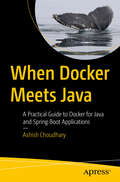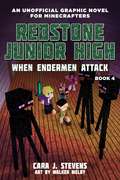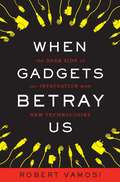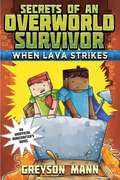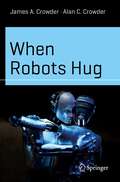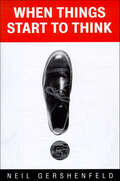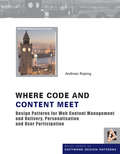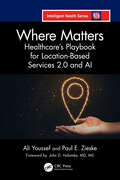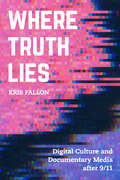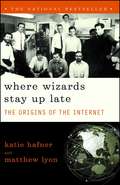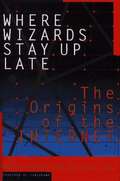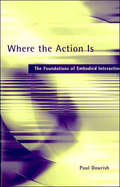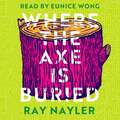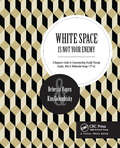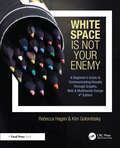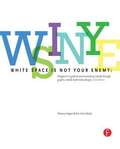- Table View
- List View
When Docker Meets Java: A Practical Guide to Docker for Java and Spring Boot Applications
by Ashish ChoudharyDiscover how to become a more efficient Java developer using Docker. This book will help you streamline your development process, boost portability, and enhance the efficiency of your applications. Docker has transformed the landscape of application and deployment by simplifying the creation and management of development environments, saving valuable time and reducing compatibility issues. With this book, you will learn how to package Java applications into Docker containers, making them consistent and portable across different environments. As a result, you’ll gain the expertise to efficiently scale and manage your applications, ensuring they run smoothly in production to boost development efficiency. This book sets itself apart through its emphasis on Java developers’ specific needs and challenges, providing relevant examples and use cases. The hands-on practical approach provides you with the necessary skills to be a more valuable Java developer. What You Will Learn Understand the fundamental concepts of Docker and containerization Package Java applications into Docker containers Gain hands-on experience in Dockerizing Java applications Efficiently test, debug, deploy, and scale Java applications using Docker Acquire skills that will make you a more valuable and efficient Java developer Who This Book Is For Java developers who want to make their applications more portable and easier to manage
When Endermen Attack (Redstone Junior High #4)
by Cara J. StevensWinter has come to Redstone Junior High once again, and with it comes holiday celebrations, snowball combat practice, and loads of outdoor fun. But even though the threat of Smite and his henchmen has passed, a new, sinister force lurks in the dark hallways of the school. Strange blocks begin to appear in random places throughout the school, and students have been hearing eerie sounds coming from its abandoned corridors. Pixel, Sky, and Umal team up to figure out what’s tormenting their school and why. <p><p> To make matters worse, Tina and her followers are determined to work against Pixel. What follows is a griefing war that spares no one—not even the teachers or Principal Redstone. As the kids discover more about the lanky creatures who are terrorizing their school, it becomes painfully clear that they must put aside their differences to unite against a common enemy. Will a mob invasion actually bring the students together, or will Redstone Junior High remain haunted forever?
When Gadgets Betray Us: The Dark Side of Our Infatuation With New Technologies
by Robert VamosiWriting in plain language for general readers, Vamosi, a computer security analyst and a contributing editor at PCWorld, explains what we're really signing up for when we log in and reveals the secret lives of our electronic devices, offering a commonsense approach for protecting ourselves. The book is about hardware hacking and new kinds of identity fraud: how our mobile phone conversations can be intercepted, how our credit cards and driver's licenses can be copied at a distance. The author travels from the streets of New York and LA to Johannesburg and Berlin, to talk to people who have experienced firsthand how gadgets can betray us and to examine the effects of technology in the Third World. He recommends the addition of basic authentication and strong encryption to most hardware to reduce the vulnerabilities described in the book, but notes that hardware manufacturers have so far shown little interest in securing their gadgets. Annotation ©2011 Book News, Inc. , Portland, OR (booknews. com)
When Lava Strikes: An Unofficial Minecrafters Novel (Secrets of an Overworld Survivor #2)
by Grace Sandford Greyson MannWhen Will and Mina discover an abandoned mine shaft, they quickly plan a treasure hunt. The two friends dream of the riches they’ll unearth together and can’t wait to get started, but they quickly discover that they very different ideas about what treasure is! Torn between searching for mobs and potion supplies and seeking out the chest at the heart of the mine, the duo is on the verge of splitting up.But then a trio of treasure hunters challenge Will and Mina, and a poorly aimed pickaxe puts everyone in the mine in danger. As the chambers around them fill with lava and their hunt for treasure becomes a fight for survival, can Will and Mina put their differences aside and work together to escape with their lives?Every chapter of this second installment in the Secrets of an Overworld Survivor chapter book series is packed with adventure-perfect for introducing young gamers to reading!Sky Pony Press, with our Good Books, Racehorse and Arcade imprints, is proud to publish a broad range of books for young readers-picture books for small children, chapter books, books for middle grade readers, and novels for young adults. Our list includes bestsellers for children who love to play Minecraft; stories told with LEGO bricks; books that teach lessons about tolerance, patience, and the environment, and much more. While not every title we publish becomes a New York Times bestseller or a national bestseller, we are committed to books on subjects that are sometimes overlooked and to authors whose work might not otherwise find a home.
When Robots Hug (Science and Fiction)
by James A. Crowder Alan C. CrowderBy 2027, it had been seven years since the scientists’ sea-changing research on artificial psychology and robotics. The work debuted around the same time as Large Language Model Chatbots, and the power of the integration of the two technologies put many industries in a tailspin. The commercial and defense industries especially were still scrambling to regulate their use in research and universities. The sought-after scientists signed with DARPA to build reliable and secure AI entities, but the agency grew fearful of the technology’s power and ultimately decided it was too dangerous to bring to market and demanded the scientists destroy the work. The researchers couldn’t bring themselves to discard 20 years of research, so instead sent the entities to various research labs around the world. But unbeknownst to them, each AI-entity embraced its new home, growing, adapting, evolving, and ultimately connecting beyond what the researchers could envision. In the end, as the scientists catch up to each one, they realize the entities have discovered a very human means of interacting: the power of physical contact; and not physical contact between humans and technology, but physical contact between robotic entities. And with this discovery, the entities join forces to only grow stronger. This development ushers in a new paradigm where the difference between AI-entities and human entities becomes less and less discernible. All the AI and robotic science featured in the book is real; the story line is fictional, but with how fast innovation moves, it’s not hard to envision.
When Things Start to Think
by Neil GershenfeldIn When Things Start to Think, Neil Gershenfeld tells the story of his Things that Think group at MIT's Media Lab, the group of innovative scientists and researchers dedicated to integrating digital technology into the fabric of our lives.Gershenfeld offers a glimpse at the brave new post-computerized world, where microchips work for us instead of against us. He argues that we waste the potential of the microchip when we confine it to a box on our desk: the real electronic revolution will come when computers have all but disappeared into the walls around us. Imagine a digital book that looks like a traditional book printed on paper and is pleasant to read in bed but has all the mutability of a screen display. How about a personal fabricator that can organize digitized atoms into anything you want, or a musical keyboard that can be woven into a denim jacket? When Things Start to Think is a book for people who want to know what the future is going to look like, and for people who want to know how to create the future.
When VR Serious Games Meet Special Needs Education: Research, Development and Their Applications (Gaming Media and Social Effects)
by Yiyu Cai Qi CaoThis book presents selected research and development on virtual reality (VR) and serious games (SG) applications to assist children with Autism Spectrum Disorder (ASD) in their learning of different skills. Children with ASD have challenges to learn skills of learning, living, and working, due to their cognitive and behavioral limitations. The authors and their research teams of this book have many years’ research experience developing innovative and interactive VR and SG technology for the special needs education. More specifically, several VR serious games are designed to train children with ASD on learning skill, life skill, and job skill. Such games are often developed based on the needs of special education and used by special needs schools in Singapore. This book is a useful resource for students, scholars, and designers of learning material who want to embrace VR and SG for children with ASD.
When You Find Out the World Is Against You: And Other Funny Memories About Awful Moments
by Kelly Oxford“Kelly is part geek, part freak. When You Find Out The World Is Against You shows us ourselves: our sensitivities, our awkward moments, our strange desires. She takes us through summer camp, dating, rape culture, Trump, death . . . Kelly Oxford c’est moi.” — James Franco“Two things I’m grateful for: how imperfect Kelly Oxford is at life and decision-making, and how terrific she is at writing about what a goddamn mess she is.” — Patton Oswalt“Kelly Oxford’s writing is hilarious and fearless. She’s the badass Canadian sister I never had.” — Mindy Kaling“I have worshipped the mind of Kelly Oxford for eons. Kelly Oxford’s concise, whip-smart observations feel eerily universal. When You Find Out the World is Against You shows that there is something to be learned from even the most absurd or devastating moments of life.” — Jill Soloway“Kelly Oxford is a beautiful writer. She finds beauty in the mundane and humor in everyday eccentricities. She is our present-day, funny Joan Didion.” — Gia Coppola
When a Phantom Spawns: An Unofficial Minecrafters Novel (Aquatic Adventures in the Overworld #1)
by Maggie MarksA brand-new series about the underwater world of Minecraft! Brothers Mason and Asher have only ever known the comfort of dry land in the Overworld. But when a terrifying shipwreck leaves them stranded, their new friend Luna urges them to safe haven—underwater. In each story of the all-new series for Minecrafters, Aquatic Adventures in the Overworld, this unlikely trio must make the choice of staying in the world they know best and risk death, or voyaging into an unknown world where anything could happen. Follow their journey as Mason, Asher, and Luna face incredible obstacles and discover strength they never knew they had in Aquatic Adventures in the Overworld. In their first aquatic adventure, Mason and his brother, Asher, wake to find themselves shipwrecked on a deserted beach. Where are they? How’d they get here? And how will they survive? They’ve lost their map, and now Mason is losing sleep, too. Are those phantoms swirling overhead, waiting to strike? A new friend, Luna, urges the brothers to follow her underwater to the safety of the ocean floor—before it’s too late. . .
When the Press Fails: Political Power and the News Media from Iraq to Katrina
by W. Lance Bennett Regina G. Lawrence Steven LivingstonDrawing on revealing interviews with Washington insiders and analysis of content from major news outlets, the authors illustrate the media unilaterally supported White House whenever oppositional voices elsewhere in government fall silent.
Where Cloud Is Ground: Placing Data and Making Place in Iceland (Atelier: Ethnographic Inquiry in the Twenty-First Century #11)
by Alix JohnsonWhere Cloud Is Ground offers an ethnography of the international data storage industry and an inquiry into the relationship between data and place. Based in Iceland, which is fast becoming a hot spot for data centers—facilities where large quantities of data are processed and stored—the book traces the fraught work of siting data’s material manifestations in relation to landforms and earth processes, local politics, national narratives, and still-open questions of spatial justice and sovereignty. Doing so, it unsettles techno-utopian ideals of connectivity and offers a window into what it means to live with our data, in a place where more and more data now lives.
Where Code and Content Meet
by Andreas RuepingA practical go-to reference for Web developers programming custom software for Web sitesMost advanced Web sites or Web platforms have specific requirements that go beyond standard functionality; to meet such requirements, it's often necessary to develop custom software. This is the point where code and content meet, and where this book begins. Where Code and Content Meet presents a collection of real-world, tried and tested patterns that address content-related aspects of custom software development for advanced Web sites or platforms.Mined from a series of successful Web projects, the patterns represent collected expertise of designers from several software development teams and serve as a practical guide to designing your own content-related custom components for your Web project. The patterns are independent of specific tools and technologies, and focus on non-functional requirements, with the overall goal of defining sustainable software architecture.Presents a collection of tried and tested software patterns mined from a series of successful Web projectsIncludes checklists for managing Web projects and real-world patterns from PLoP conferencesIllustrates use of software patterns through a case study that runs throughout the book and gradually evolves as the patterns are applied to it, one by oneCovers content modeling and content organization, navigation, findability, personalization, and user participationBy employing the software patterns included in Where Code and Content Meet, you'll learn how to program custom software faster and more efficiently.
Where Is Science Leading Us?: And What Can We Do to Steer It?
by Lars Jaeger Michel DacorognaThis book charts the evolution of the sciences and technologies that have shaped our modern age like nothing else in the last 60 years. As well as describing many exciting developments, it will also highlight the challenges and dangers of the technologies that have emerged from them. While science and technology have brought about enormous and often astonishing improvements in our quality of life, they have often also brought with them considerable risks, including the risk of human extinction. We place particular emphasis on the aspects that directly impact us as human beings: Artificial Intelligence (AI), enhancements of our brains/minds through innovative neuro-technologies, and the integration of nanotechnology into our bodies for early disease detection and elimination. What philosophical implications arise from these transformations? Authored by two theoretical physicists who are also experts in economics and capital markets - a rather rare combination - the book will explain the developments of modern science and the resulting technologies. It also examines the current state of play and emerging developments in a manner accessible to non-scientists. Based on their own experience and the analysis, the authors also propose ways in which science can progress more harmoniously in future.
Where Matters: Healthcare's Playbook for Location-Based Services 2.0 and AI
by Ali Youssef Paul E ZieskeImagine a hospital where equipment never goes missing, patients never wait unnecessarily, and staff focus on care instead of logistics. In Where Matters: Healthcare's Playbook for Location-Based Services 2.0 and AI, this vision becomes reality through care traffic control (CTC), a revolutionary framework that brings the precision and reliability of aviation traffic control to healthcare operations.Drawing from decades of experience in both aviation and healthcare, the authors reveal how location-based services and digital twin technologies can transform healthcare operations from reactive to predictive, from fragmented to orchestrated, from inefficient to optimized. This isn’t just another technology book – it’s a blueprint for operational revolution.Through the compelling journey of Edenvale General Hospital, readers witness the dramatic transformation that occurs when real-time location intelligence meets operational excellence. From reduced costs and improved patient satisfaction to enhanced staff productivity and safety, the results are nothing short of extraordinary.Learn how to: Create a hospital command center that rivals the sophistication of air traffic control Deploy automation that enhances rather than replaces human capabilities Transform chaotic workflows into synchronized symphonies of efficiency Build a digital twin that makes the invisible visible and the impossible achievable Generate immediate returns while building toward long-term transformation Whether you’re a healthcare executive seeking operational excellence, a technology leader navigating digital transformation, or an improvement professional driving change, Where Matters: Healthcare's Playbook for Location-Based Services 2.0 and AI provides the roadmap, tools, and insights you need. Each chapter includes specific guidance for improvers, leaders, and vendors, ensuring practical application across all stakeholder groups.This isn’t just about tracking assets or monitoring workflows – it’s about fundamentally reimagining how healthcare operations can work. Through real-world examples, practical frameworks, and proven methodologies, Where Matters: Healthcare's Playbook for Location-Based Services 2.0 and AI shows you how to turn this vision into reality. Join the operational revolution that’s transforming healthcare – because in the future of healthcare operations, where matters.
Where Truth Lies: Digital Culture and Documentary Media after 9/11
by Kris FallonA free open access ebook is available upon publication. Learn more at www.luminosoa.org. This boldly original book traces the evolution of documentary film and photography as they migrated onto digital platforms during the first decades of the twenty-first century. Kris Fallon examines the emergence of several key media forms—social networking and crowdsourcing, video games and virtual environments, big data and data visualization—and demonstrates the formative influence of political conflict and the documentary film tradition on their evolution and cultural integration. Focusing on particular moments of political rupture, Fallon argues that the ideological rifts of the period inspired the adoption and adaptation of newly available technologies to encourage social mobilization and political action, a function performed for much of the previous century by independent documentary film. Positioning documentary film and digital media side by side in the political sphere, Fallon asserts that "truth" now lies in a new set of media forms and discursive practices that implicitly shape the documentation of everything from widespread cultural spectacles like wars and presidential elections to more invisible or isolated phenomena like the Abu Ghraib torture scandal or the "fake news" debates of 2016.
Where Wizards Stay Up Late: The Origins Of The Internet
by Katie Hafner Matthew LyonTwenty five years ago, it didn't exist. Today, twenty million people worldwide are surfing the Net. Where Wizards Stay Up Late is the exciting story of the pioneers responsible for creating the most talked about, most influential, and most far-reaching communications breakthrough since the invention of the telephone. In the 1960's, when computers where regarded as mere giant calculators, J.C.R. Licklider at MIT saw them as the ultimate communications devices. With Defense Department funds, he and a band of visionary computer whizzes began work on a nationwide, interlocking network of computers. Taking readers behind the scenes, Where Wizards Stay Up Late captures the hard work, genius, and happy accidents of their daring, stunningly successful venture.
Where Wizards Stay Up Late: The Origins of the Internet
by Katie Hafner Matthew Lyon"A little more than twenty-five years ago, computer networks did not exist anywhere - except in the minds of a handful of computer scientists. In the late 1960s, the Defense Department's Advanced Research Projects Agency funded a project to create computer communication among its university-based researchers. The experiment was inspired by J. C. R. Licklider, a brilliant scientist from MIT. At a time when computers were generally regarded as nothing more than giant calculators, Licklider saw their potential as communications devices." "Where Wizards Stay Up Late is the story of the small group of researchers and engineers whose invention, daring in its day, became the foundation for the Internet. With ARPA's backing, Licklider and others began the quest for a way to connect computers across the country." "In 1969, ARPA awarded the contract to build the most integral piece of this network - a computerized switch called the Interface Message Processor, or IMP - to Bolt Beranek and Newman (BBN), a small Cambridge, Massachusetts, company. A half-dozen engineers at BBN, who called themselves the IMP Guys, knew it was possible to do what larger companies - including AT&T and IBM - had dismissed as impossible. But making computer networking possible required inventing new technologies. Working around the clock, the IMP Guys met a tight deadline, and the first IMP was installed at UCLA nine months after the contract award." "A nationwide network called the ARPANET grew from four initial sites. Protocols were developed, and along the way a series of accidental discoveries were made, not the least of which was e-mail. Almost immediately, e-mail became the most popular feature of the Net and the "@" sign became lodged in the iconography of our times. The ARPANET continued to grow, then merged with other computer networks to become today's Internet. In 1990, the ARPANET itself was shut down, fully merged by then with the Internet it had spawned.
Where the Action Is: The Foundations of Embodied Interaction (The\mit Press Ser.)
by Paul DourishComputer science as an engineering discipline has been spectacularly successful. Yet it is also a philosophical enterprise in the way it represents the world and creates and manipulates models of reality, people, and action. In this book, Paul Dourish addresses the philosophical bases of human-computer interaction. He looks at how what he calls "embodied interaction"—an approach to interacting with software systems that emphasizes skilled, engaged practice rather than disembodied rationality—reflects the phenomenological approaches of Martin Heidegger, Ludwig Wittgenstein, and other twentieth-century philosophers. The phenomenological tradition emphasizes the primacy of natural practice over abstract cognition in everyday activity. Dourish shows how this perspective can shed light on the foundational underpinnings of current research on embodied interaction. He looks in particular at how tangible and social approaches to interaction are related, how they can be used to analyze and understand embodied interaction, and how they could affect the design of future interactive systems.
Where the Axe is Buried
by Ray NaylerAll systems fail. All societies crumble. All worlds end.In the authoritarian Federation, there is a plot to assassinate and replace the President, a man who has downloaded his mind to a succession of new bodies to maintain his grip on power. Meanwhile, on the fringes of a Western Europe that has renounced human governance in favour of ostensibly more efficient, objective, and peaceful AI Prime Ministers, an experimental artificial mind is malfunctioning, threatening to set off a chain of events that may spell the end of the Western world.As the Federation and the West both start to crumble, Lilia, the brilliant scientist whose invention may be central to bringing down the seemingly immortal President, goes on the run, trying to break out from a near-impenetrable web of Federation surveillance. Her fate is bound up with a worldwide group of others fighting against the global status quo.Each of them must navigate seemingly insurmountable dangers and threats to remain free and, ultimately, put humanity's future back into its own hands.A cybernetic novel of political intrigue, Where the Axe is Buried combines the story of a near-impossible revolutionary operation with a blistering indictment of the many forms of authoritarianism that suffocate human freedom.
Where the Axe is Buried
by Ray NaylerAll systems fail. All societies crumble. All worlds end.In the authoritarian Federation, there is a plot to assassinate and replace the President, a man who has downloaded his mind to a succession of new bodies to maintain his grip on power. Meanwhile, on the fringes of a Western Europe that has renounced human governance in favour of ostensibly more efficient, objective, and peaceful AI Prime Ministers, an experimental artificial mind is malfunctioning, threatening to set off a chain of events that may spell the end of the Western world.As the Federation and the West both start to crumble, Lilia, the brilliant scientist whose invention may be central to bringing down the seemingly immortal President, goes on the run, trying to break out from a near-impenetrable web of Federation surveillance. Her fate is bound up with a worldwide group of others fighting against the global status quo.Each of them must navigate seemingly insurmountable dangers and threats to remain free and, ultimately, put humanity's future back into its own hands.A cybernetic novel of political intrigue, Where the Axe is Buried combines the story of a near-impossible revolutionary operation with a blistering indictment of the many forms of authoritarianism that suffocate human freedom.
Which-Is-Better (Springer Series in Reliability Engineering)
by Toshio Nakagawa Xufeng Zhao Satoshi MizutaniThis is the first book on the Which-Is-Better (WIB) Problem. These are questions that in daily life include such as “Which is larger, younger and stronger?". The main objective of this book is summarizing WIB Problems in maintenance and reliability theory. Optimal policies of replacement first, last and overtime are derived and compared theoretically and numerically, and WIB policies are determined. Furthermore, the reliability properties of parallel and standby systems are compared, and WIB system is determined. These WIB Problems are applied to shock and damage models and backup and checkpoint models of computer systems.
White Space Is Not Your Enemy: A Beginner's Guide To Communicating Visually Through Graphic, Web And Multimedia Design
by Kim Golombisky Rebecca HagenDesigning a website or brochure without an art background? Then step away from the computer and read this engaging, conversational introduction to visual communications first. Written for the beginner, White Space is Not Your Enemy, Second Edition, is a practical graphic design and layout guide that introduces the concepts and practices necessary for producing effective visual communication across a variety of formats--from web to print. <P><P> This beautifully illustrated, full-color book covers all of the basics to help you develop your eye and produce evocative designs that work. Topics include: <P> * What is design? <P> * Pre-design research and brainstorming. <P> * The "works-every-time layout" and "13 layout sins." <P> * The elements and principles of design. <P> * Layouts for impact. <P> * Getting along with type. <P> * Choosing and using color. <P> * Working with photos and illustrations. <P> * Intros to infographics, storyboarding and multimedia components. <P> * Output for the web and print. <P> Visit www. whitespacedesignbook. com for additional supporting materials.
White Space Is Not Your Enemy: A Beginner's Guide to Communicating Visually Through Graphic, Web & Multimedia Design
by Kim Golombisky Rebecca HagenWhite Space Is Not Your Enemy is a practical graphic design and layout guide that introduces concepts and practices necessary for producing effective visual communication across a variety of formats—from web to print. Sections on Gestalt theory, color theory, and WET layout are expanded to offer more in-depth content on those topics. This new edition features new covering current trends in web design—Mobile-first, UI/UX design, and web typography—and how they affect a designer’s approach to a project. The entire book will receive an update using new examples and images that show a more diverse set of graphics that go beyond print and web and focus on tablet, mobile and advertising designs.
White Space Is Not Your Enemy: A Beginner's Guide to Communicating Visually Through Graphic, Web & Multimedia Design
by Kim Golombisky Rebecca HagenDESIGNING a website or brochure without an art background? Then step away from the computer and read this engaging conversational introduction to visual communications first. Written for the beginner, White Space Is Not Your Enemy is a practical graphic design and layout guide that introduces the concepts and practices necessary for producing effective visual communication across a variety of formats—from web to print. This beautifully illustrated full-color book covers all of the basics to help you develop your eye and produce evocative designs that work.Topics include: What is design? Predesign research & brainstorming The elements & principles of design Layouts for impact Getting along with type Choosing & using color Working with photos & illustrations Creating infographics Designing for web & social media
White Space is Not Your Enemy
by Kim Golombisky Rebecca HagenDesigning a brochure or web site without an art background? Step away from the computer and read this breezy introduction to visual communications first. Written for non-designers, White Space is Not Your Enemy is a practical graphic design and layout text introducing the concepts and practices necessary for producing effective visual communications across a variety of formats, from print to Web.This beautifully illustrated, full-color book covers the basics to help you develop your eye and produce attractive work. Topics include:* The basics of effective design that communicates its intended message* Pre-design planning* 13 Layout Sins to avoid* Basic typography* Working with color* Storyboarding for video, Web, and presentions* Information graphics* Mini Art School--all the basics in one chapter* Outputting your work
